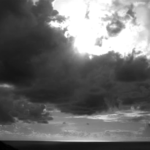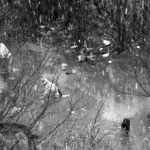The basics
Let’s first understand what ‘climate’ means. People often confuse climate with weather, but they are two very different things. Weather describes the condition of atmosphere over a short period of time. Humidity, air temperature and pressure, wind speed and direction, cloud cover and type are all atmospheric characteristics of the momentary conditions we call ‘weather’. On the other hand, we can describe climate as the average weather of a long period of time of an area or a country.
Earth’s Climate
Earth’s climate has and will always vary for natural reasons. Throughout the history of the Earth there have been both long and short-term periods of climate change.
During the periods of Ice Age, the temperature of Earth changed, being around 4°C. The last Ice Age ended about 11.000 years ago.
There have also been short periods of climate change at a regional level.. For example, in Europe from 10th century until the 13th century, the Medieval Warm Period was characterised by slightly warmer temperatures, followed by a period of colder weather, the Little Ice Age.
What’s happening now?
Over the last century our climate has started to change rapidly again. According to scientists, this is due to increased amounts of greenhouse gases in the atmosphere.
Solar energy warms the Earth’s surface and, as the temperature increases, one third of this energy is reflected back into the universe. The remaining two thirds of solar energy is absorbed within the atmosphere, the oceans and the warming land.
In this situation, the atmosphere acts like a greenhouse, letting in the visible lights and absorbing the outgoing infra-red energy. This natural process is called the “Greenhouse Effect”, which is very important considering that without it Earth’s average temperature would be -18°C.
So what is the Problem?
The problem is that human activities have enhanced this natural process, the greenhouse effect, by adding greenhouse gases, such as carbon dioxide, methane and nitrous oxide, to the atmosphere. The results of these human activities include the rise of atmospheric temperatures, rising sea levels, melting glaciers, changes in rainfall patterns and many more effects.








